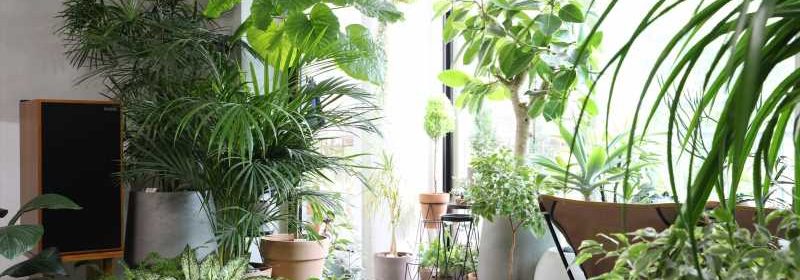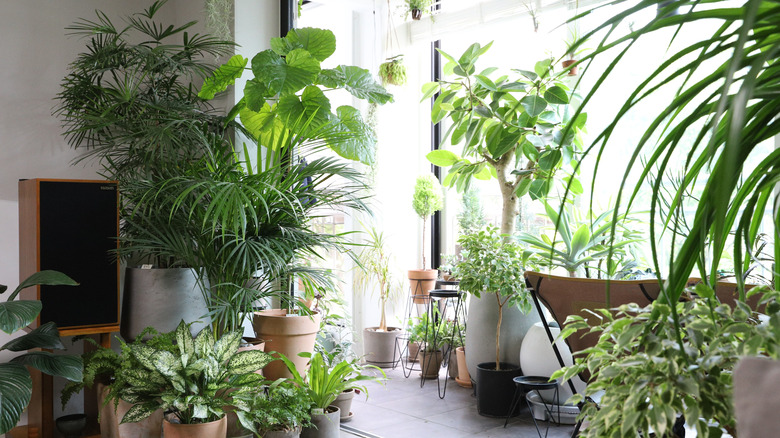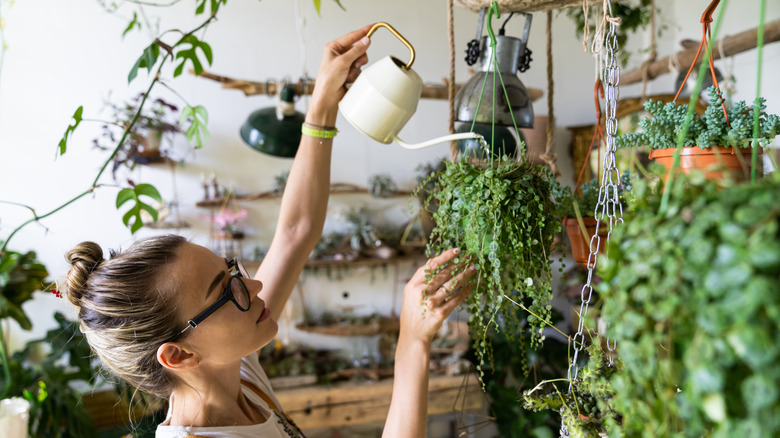Heres How To Rid Your Plants Of Brown Spots

Every plant owner fears the same thing: brown spots. Even if you give your stems an adequate amount of sunlight and water, they can sometimes still show signs of distress. Plus, darker spots also disrupt photosynthesis, The Spruce notes, negatively affecting the overall health of the plant. Luckily, they aren’t enough to seriously harm its growth, just hamper it.
These spots might be related to diseases that plants can obtain; the outlet notes that, while there are many names for these illnesses, many of the brown marks come from fungi. These spots can also come in various colors, the outlet notes, and a fungicide will help stop the issue. However, it’s important to note where exactly you notice these spots before diagnosing the issue.
Mindbodygreen suggests using the dark spots as a barometer for how your plant is doing. For instance, if your ficus’ edges look a little crispy with dark spots, it likely means it needs more water. The outlet explains that it’s similar to being stressed out as a human — it happens sometimes, even if you do drink enough water. Your plant may be signaling that it needs a little more support or even humidity to bloom its best. These dark spots or rougher edges could also denote an issue with the plant’s routine overall. Maybe you’ve been watering it too much for a few weeks or it needs a break from the sun. Start trying different remedies to see what’s going on.
Plants can get sunburned too
Plants are just like humans — they can respond to stress and even get a sunburn. If you notice one of your more delicate stems sitting underneath the hot sun for a prolonged period of time, it’s wise to make sure that it’s a plant that can handle a lot of light. If your plant has isolated dark marks, it could be a sign of sun damage rather than a bigger problem — that area likely gets the most sun on a daily basis. Move the pot a few inches further away from the window and monitor if it continues to spread.
Furthermore, if the spots originate towards the middle of your leaves, this could be from overwatering, Mindbodygreen reports. “You’re starting to see some of those cell walls burst because the plant is just not able to process the volume that you’re putting into it,” Rebecca Bullene, the founder of Greenery Unlimited, tells the outlet. Before you head towards your plants with a watering can, it’s best to check if the top few inches of the soil are dry. This way, you’ll be better able to discern whether or not your plant actually needs watering — especially since overwatering can lead to root rot, which you definitely don’t want. Adopt this tactic when you need to make sure!
Brown spots on leaves come from a variety of sources. Just remember that most of them come from long-term issues like too much sun or water. Adjust accordingly and watch as your plants grow stronger than ever.
Source: Read Full Article

